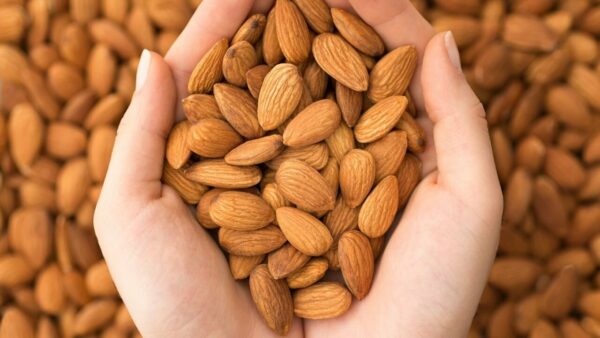Being an active individual means that you will be prone to injuries. Torn ligaments, sore muscles, cuts, bruises, scrapes – these are the sacrifices that every athlete makes to stay in shape. While sports-related injuries may not be avoidable, there are a few things you can do to speed up the recovery process, without the use of opioid painkillers.
Studies on cannabis for athletic recovery have demonstrated the plant’s ability to heal the body and even ameliorate performance, whether that boost in performance is noticeable on the football pitch, in the tennis court or at your local swimming pool.

Contrary to popular belief, cannabis doesn’t have to suck up all of your energy and leave you in a state of euphoria.
Take Avery Collins for example. This 25-year-old professional runner uses cannabis as part of his daily routine. He is one of the many athletes using cannabis for post-workout recovery, so why not try it for yourself by visiting accredited San Francisco dispensaries?
Studies Show Cannabis May Prove Beneficial for Post-Workout Recovery
The cannabis plant comprises hundreds of different chemical compounds called cannabinoids. When they work in synergy, they can do wonders for the human body. Advances in research on the endogenous cannabinoid system indicate its importance in maintaining bodily functions that may enhance overall sports performance. Many scientific studies on cannabis for workout recovery prove this.
Take cannabidiol (CBD) for example. This medicinal cannabinoid tends to have a much greater antioxidant effect than vitamin C and D, making it a preferred option for sportspeople dealing with inflammation. Combined with a pain-relieving compound like tetrahydrocannabinol (THC), the cannabinoid may even demonstrate anti-arthritic properties. Best of all, these cannabis plant compounds are all-natural.
Understanding How the Endocannabinoid System Works
To get a good understanding of cannabis’ influence on athletic recovery and performance, you must first familiarize yourself with the Endocannabinoid System (ECS). During research on the effects of cannabis on humans, scientists uncovered this unique system inside the human body. It comprises an abundance of cannabinoid receptors, which amazingly produce (corresponding) molecules that stimulate a whole host of physical and psychological effects.
If it weren’t for the ECS, cannabis wouldn’t react with our senses in the ways that it does. Medical research on the complex system is ongoing and since the ECS boasts immense amounts of therapeutic potential, is there any wonder why scientists have become so obsessed since it was initially discovered?
To explain what the system does in simple terms, let’s first examine the term “endo”.
This term is short for “endogenous” – a word used to describe something that is produced or originated within a cell, organism or tissue. The term “cannabinoid” is what we use to reference the special cannabis compounds that trigger responses within the ECS.
An easy way to think about the system’s inner workings is to picture cell receptors inside the body as electrical sockets. Their corresponding plugs are the chemical molecules that scientists like to call “agonists”. When the plug (agonist) connects with an electrical socket (receptor), it prompts a message.
Naturally, the body produces chemical messengers (endogenous cannabinoids) to match the two primary cell receptors contained within the ECS – CB1 and CB2. Cannabinoids are also found outside the body, with cannabis producing hundreds of them. These are called “exogenous” cannabinoids.
How do cannabis receptors impact sporting performance and recovery?
Receptors are scattered around the human body, each with a different function.
CB1 receptors are usually found in the brain and spinal cord. They influence behaviors, appetite, emotions and memory processing. Since they may also be found in nerve endings, CB1 receptors are capable of minimizing feelings of pain.
CB2 receptors are typically found in the peripheral nervous system, gastrointestinal tract and immune cells. Not only do they help alleviate certain medical conditions and inflammation but also, CB2 receptors could positively manipulate the body’s immune response when dealing with disease.
The human body produces two main cannabinoids (endocannabinoids) within fatty acids like omega-3 – anandamide and 2-AG (2-arachidonoyl glycerol). Why, you ask? Well, their purpose is to encourage essential body functions. Deficient cannabinoid levels could actually be the main reason why medical conditions like fibromyalgia and chronic pain arise in the first place, according to Senior adviser at GW Pharmaceuticals, Ethan Russo.
Thanks to the ECS, our body’s patterns and functions are regulated, including:
- Sleep
- Pain
- Digestion
- Memory
- Mood
- Metabolism
- Appetite
- Reproduction
- Pain and Inflammation
- Immune Function
- Neuroprotection and Development
Various studies on endocannabinoids have demonstrated increased levels of endocannabinoids in people who have been diagnosed with chronic pain, arthritis and Parkinson’s Disease. Tumor cells also contain increased levels of cannabinoid receptors. What this tells us is that homeostasis can be regulated naturally with the ECS, allowing active individuals to maintain stable internal equilibrium.
Share Your Thoughts
Are you an athlete who uses cannabis to treat sports injuries or for post workout recovery? Leave us a comment and share your experience in the thoughts below.







